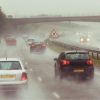
Almost half (48%) of the 3,102 drivers questioned for the RAC Report on Motoring say they have exceeded the speed limit of 60mph on rural roads – up from 44% in 2021 and matching the highest figure ever seen by the RAC in 2016. Almost one in 10 (8%) confess to having done this frequently while 40% say they have done it occasionally on up to half of their journeys on these roads.
In 2021, 514 people were killed in a total of 11,827 collisions on 60mph non-built-up roads – a fatality rate of 4%, which is higher than on motorways.
On motorways and high-speed dual carriageways, as many as 60% of drivers say they have broken the 70mph limit, either on most journeys (16%) or up to half of their trips (43%) in the past 12 months. The 60% figure is the biggest the RAC has seen since 2017 at 66%. However, it is still down on the record of 70% reported in both 2015 and 2016.
The most common reason drivers give for exceeding the motorway 70mph limit is that they are travelling at the same speed as other motorists (42%). The same justification is used by 32% of those who break 60mph limits.
RAC road safety spokesman Simon Williams said: “The recent increase in the proportion of drivers admitting to speeding on 60mph rural roads is extremely worrying as more people lose their lives every year in collisions on these roads than on any other. It’s even more concerning that this figure is now back to the all-time high of 48%.”
The RAC is urging the government to tackle the problem by recommending that road authorities lower speed limits on the most perilous sections to more suitable levels. This comes after 253 fatalities occurred in 2021 as a result of accidents in which someone was driving above the speed limit.
Williams expressed concern that a higher percentage of drivers are now admitting to exceeding the 70mph limit on the UK’s fastest roads than at any time since 2017. He fears that this trend may lead to a resurgence of the high levels seen in 2015 and 2016, where 70% of drivers exceeded the limit, with negative implications for road safety. Williams suggested that digital signage on motorways could help remind drivers of the dangers of breaking the speed limit and make them even safer statistically.
Although the percentage of drivers exceeding speed limits on urban roads has remained relatively stable over the past year, with 40% of drivers admitting to breaking the 30mph limit occasionally (compared to 41% in 2021) and 46% exceeding the 20mph limit, almost half of these drivers say the limit is inappropriate for that particular road.
Most drivers believe that motorists only obey 20mph limits when there is enforcement or physical traffic-calming measures in place, while 65% say that speed camera warning signs help them adhere to the limit. However, 52% of drivers say they would oppose additional 20mph limits being introduced in their area.
On the other hand, almost half of drivers (48%) believe that some 60mph limits on unclassified rural roads should be lowered.
Enhance your fleet:
Speeding can have serious consequences, including collisions, fines or even driving bans, all of which can result in significant costs to employers. Managing speed is not just about enforcement, but also about creating a culture that values safety and educates drivers about the importance of managing speed, whilst not putting unreasonable pressure on workers.
We can strive towards promoting a safer and more responsible driving culture by equipping drivers with the necessary information and resources to make informed choices regarding their speed, ultimately decreasing collisions.
Talk to us about our range of solutions to enhance your fleet safety. From speed management training to online risk management tools combined with e-learning, and a host of other handy features, IAM RoadSmart is here to help.


